#Jorge Petraglia
Photo
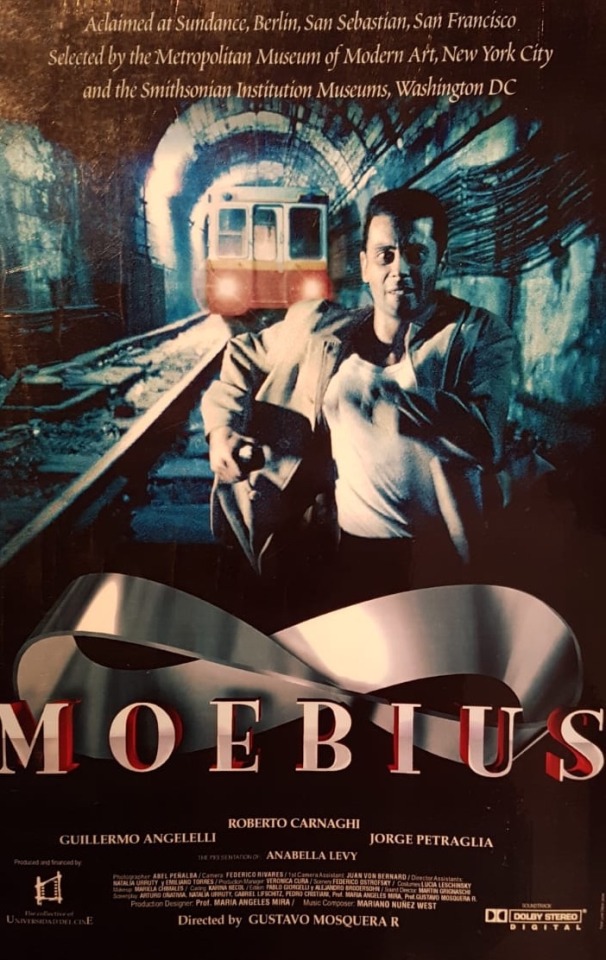
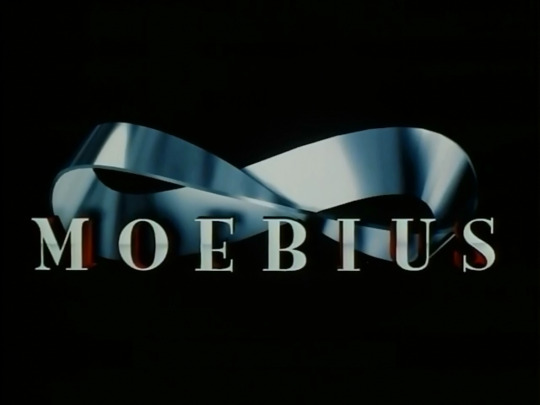
CALIFICACIÓN PERSONAL: 5 / 10
Título Original: Moebius
Año: 1996
Duración: 88 min
País: Argentina
Director: Gustavo Mosquera R.
Guion: Pedro Cristiani, Gabriel Lifschitz, Arturo Onatavia, Natalia Urruty
Música: Mariano Núñez West
Fotografía: Abel Peñalba
Reparto: Guillermo Angelelli, Roberto Carnaghi, Anabella Levy, Jorge Petraglia, Martín Adjemián, Miguel Ángel Paludi, Fernando Llosa, Daniel Dibiase
Productora: Universidad del Cine. Distribuidora: Sherlock Media S.L.
Género: Mistery; Sci-Fi, Thriller
https://www.imdb.com/title/tt0117069/
TRAILER:
youtube
0 notes
Photo
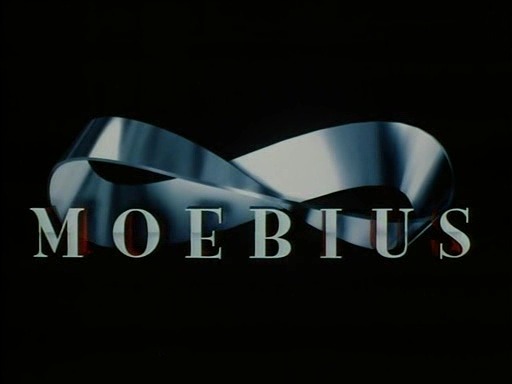

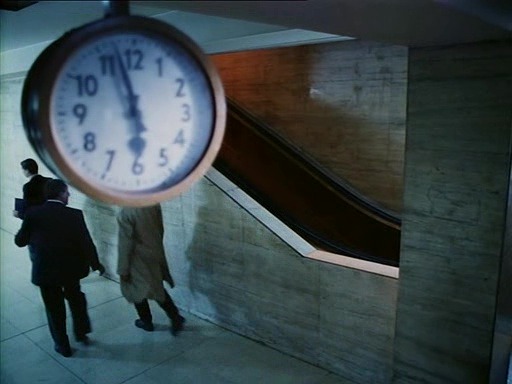


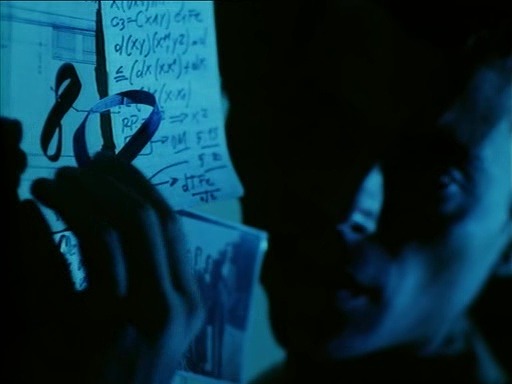

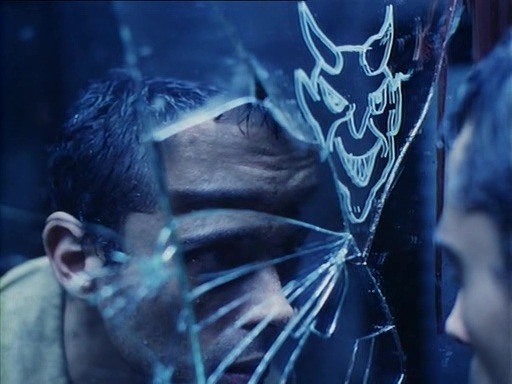

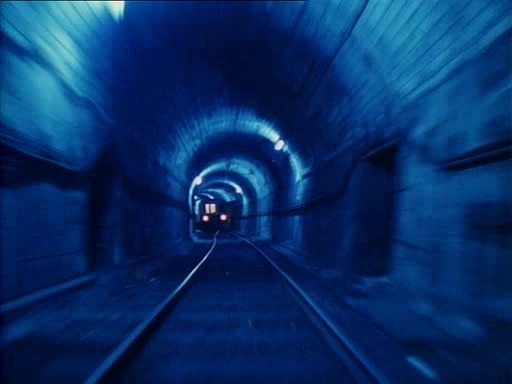
Moebius (1996) Director - Gustavo Mosquera R., Cinematography - Abel Peñalba "It's not difficult to understand why I decided to follow his steps In this no return trip before trying to lose my time trying to explain to a group of fools something they don't wish to understand. Anyhow, the old man was right, we live in a world where nobody listens anymore."
#scenesandscreens#moebius#Gustavo Mosquera R.#Guillermo Angelelli#Argentina#Roberto Carnaghi#Annabella Levy#Jorge Petraglia#Miguel Ángel Paludi#Fernando Llosa#Martín Adjemián#Daniel Di Biase#Jean Pierre Reguerraz#Martín Pavlovsky#Felipe Méndez#Fernando Cia#Osvaldo Santoro#Horacio Roca#Nora Zinski#Sammy Lerner#Rodolfo Franghi#Samuel Lankes#Ricardo Merkin#Aldo Niebur#Alejandro Viola#Javier García#Jorge Noya
33 notes
·
View notes
Text
[Last Film I Watched] The Official History (1985)
[Last Film I Watched] The Official History (1985)

English Title: The Official Story
Original Title: La historia oficial
Year: 1985
Country: Argentina
Language: Spanish, English
Genre: Drama, History, War
Director: Luis Puenzo
Writers:
Luis Puenzo
Aída Bortnik
Music: Atilio Stampone
Cinematography: Félix Monti
Cast:
Norma Aleandro
Héctor Alterio
Chunchuna Villafañe
Chela Ruíz
Patricio Contreras
Hugo Arana
Guillermo Battaglia
Analia Castro
María Luisa Robledo
Floria…
View On WordPress
#1985#7.6/10#Agusto Larreta#Analia Castro#Aníbal Morixe#Argentinian Film#Carlos Weber#Chela Ruíz#Chunchuna Villafañe#Daniel Lago#Deborah Kors#Floria Bloise#Guillermo Battaglia#Héctor Alterio#Hugo Arana#Jorge Petraglia#Laura Palmucci#Lea Rey#Lidia Catalano#Luis Puenzo#María Luisa Robledo#Norma Aleandro#Pablo Rago#Patricio Contreras
0 notes
Photo

Héctor Alterio and Norma Aleandro in The Official Story (Luis Puenzo, 1985)
Cast: Norma Aleandro, Héctor Alterio, Chunchuna Villafañe, Hugo Arana, Guillermo Battaglia, Chela Ruíz, Patricio Contreras, Maria Luisa Robledo, Anibal Morixe, Jorge Petraglia, Analia Castro. Screenplay: Luis Puenzo, Aída Bortnik. Cinematography: Félix Monti. Production design: Abel Facello. Film editing: Juan Carlos Macías. Music: Atilio Stampone.
In The Official Story, a gripping film about guilt, Norma Aleandro plays Alicia, a woman whose suspicions about the parentage of her adopted daughter, Gaby (Analia Castro), lead her to investigate the sufferings of others and thereby to share in that suffering. The film might be criticized for coming at the sordid history which underlies it, the "disappeared" citizens who opposed the Argentine junta that took power in 1976, from the wrong point of view, for turning the complacent bourgeois into victims. But the victimization game is all too easy to play, and I think it's better to see The Official Story as a film about the consequences of evil. Luis Puenzo controls the many ironies of Alicia's story, such as the fact that she's a history teacher who doesn't understand the history of own times, without letting his film become too heavy-handed and didactic. For me the climax of the film comes not when Alicia makes her shattering discovery, but in what spurs her to set out on her quest for the truth: a reunion with an old friend, Ana (Chunchuna Villafañe), who fled the country after being arrested and tortured by the junta. It begins as a light-hearted moment, with the two women getting snockered on egg nog, laughing together until the laughter turns hysterical, and Ana delivers the full story of her torture and abuse. It's a moment that brilliantly evokes the fragility of friendship and the consequences of moral and political choice.
0 notes
Text
Ngôi mộ 78.300 năm tuổi cổ xưa nhất châu Phi

KenyaNgôi mộ chứa hài cốt của em bé 2,5 - 3 tuổi trong tư thế nằm co chân, đầu kê lên chiếc gối làm bằng chất liệu dễ phân hủy.

Tư thế của em bé trong ngôi mộ 78.300 năm tuổi. Ảnh: Fernando Fueyo.
Các nhà khoa học phát hiện ngôi mộ cổ xưa nhất được xây dựng có chủ đích của con người ở châu Phi, IFL Science hôm 5/5 đưa tin. Ngôi mộ có niên đại 78.300 năm, nằm sâu 3 m so với nền hang Panga ya Saidi ngày nay. Nghiên cứu mới đăng trên tạp chí Nature.
"Ngay từ lần đầu tiên ghé thăm hang Panga ya Saidi, chúng tôi đã biết nó rất đặc biệt. Chiếc hang thực sự là độc nhất vô nhị", giáo sư Nicole Boivin, thành viên nhóm dự án khảo cổ, chia sẻ.
Hài cốt được đặt nghiêng bên phải, chân co lên đến ngực. Phân tích răng chỉ ra đây là hài cốt của một em bé 2,5 - 3 tuổi. Các nhà khoa học đặt tên em bé này là Mtoto, nghĩa là "đứa trẻ" trong tiếng Swahili.
"Chúng tôi đã bắt đầu nghiên cứu các phần xương sọ và mặt, khớp hàm vẫn còn nguyên vẹn và một số răng ngầm chưa mọc lên. Khớp ở cột sống và xương sườn cũng được bảo quản cực kỳ tốt, thậm chí giữ được độ cong của lồng ngực. Điều này cho thấy ngôi mộ chưa từng bị quấy nhiễu, sự phân hủy của hài cốt diễn ra ngay tại hố chôn", giáo sư María Martinón-Torres, giám đốc Trung tâm Nghiên cứu Quốc gia về Sự tiến hóa của Con người (CENIEH) tại Tây Ban Nha, cho biết.

Hài cốt em bé còn khá nguyên vẹn. Ảnh: Jorge González/Elena Santos.
Các nhà khoa học lần đầu phát hiện xương trong mộ vào năm 2013 và khai quật xong vào năm 2017. Nhiều khả năng ngôi mộ được đào một cách có chủ đích. Sau khi đặt hài cốt xuống hố, người xưa nhanh chóng lấp lại bằng trầm tích ở nền hang.
Hài cốt từng được bọc trong vải liệm làm bằng chất liệu nhanh phân hủy. Vị trí hộp sọ cho thấy em bé nằm kê đầu lên một chiếc gối với chất liệu tương tự. Dù không có dấu vết của vật cúng tế như trong những ngôi mộ xuất hiện muộn hơn, cách xử lý hài cốt cho thấy tang lễ có sự tham gia của nhiều thành viên trong cộng đồng.
Phân tích xương và răng chỉ ra, em bé khả năng cao là người Homo sapiens. Tuy nhiên, em bé vẫn còn một số đặc điểm ở răng tương tự với những tổ tiên cổ xưa khác của con người.
"Ngôi mộ tại Panga ya Saidi cho thấy lễ chôn cất là tập tục văn hóa mà cả người Homo sapiens và Neanderthals đều sử dụng. Phát hiện này mang lại những nghi vấn về nguồn gốc và sự phát triển của các tập tục mai táng giữa hai loài người có họ gần, về mức độ khác nhau của hành vi và cảm xúc của con người", giáo sư Michael Petraglia tại Viện Max Planck, tác giả nghiên cứu, cho biết.
Thu Thảo (Theo IFL Science)
from Tin mới nhất - VnExpress RSS https://ift.tt/3eoAGB8
via IFTTT
0 notes
Text
Oldest Known Deliberate Human Burial Uncovered in African Cave
https://sciencespies.com/humans/oldest-known-deliberate-human-burial-uncovered-in-african-cave/
Oldest Known Deliberate Human Burial Uncovered in African Cave

Around 78,000 years ago, in what is now Kenya, a three-year-old child died.
History is full of dead humans and human ancestors of all ages – dying is something everyone does, sooner or later – but this child was special. The evidence suggests that he or she was carefully laid to rest in a deliberate burial, at the mouth of the Panga ya Saidi cave.
This makes the child, named Mtoto by archeologists after the Swahili word for ‘child’, the earliest known example of deliberate burial by modern humans (Homo sapiens) in Africa.
“As soon as we first visited Panga ya Saidi, we knew that it was special,” said archeologist Nicole Boivin of the Max Planck Institute for the Science of Human History.
“The site is truly one of a kind. Repeated seasons of excavation at Panga ya Saidi have now helped to establish it as a key type site for the East African coast, with an extraordinary 78,000-year record of early human cultural, technological, and symbolic activities.”

Mtoto’s tiny bones. (Martinón-Torres et al., Nature, 2021)
The remains were first discovered in 2013, about 3 meters (9.8 feet) below the current cave floor, in a pit-shaped feature, indicating that they had been buried. The small, delicate bones were so fragile and decomposed they couldn’t be excavated at the time.
It wasn’t until 2017 that the bones could be plastered, right there on site, to be returned to the laboratory of the National Research Center on Human Evolution (CENIEH) in Spain for detailed excavation and analysis.
Mtoto was worth the additional wait.
“We started uncovering parts of the skull and face, with the intact articulation of the mandible and some unerupted teeth in place,” said archeologist María Martinón-Torres of CENIEH.
“The articulation of the spine and the ribs was also astonishingly preserved, even conserving the curvature of the thorax cage, suggesting that it was an undisturbed burial and that the decomposition of the body took place right in the pit where the bones were found.”

Virtual reconstruction of how the bones were found. (Jorge González/Elena Santos)
Two teeth discovered during analysis allowed the research team to confirm the child’s age, and microscopic and chemical examinations of the bones and surrounding sediment revealed more details.
Mtoto had been laid to rest in a hole, and covered over with sediment from the cave floor. The fact that decomposition took place in this hole means that the burial took place not long after death.
The positioning of the bones suggests that Mtoto was buried on their right side, with their knees drawn up to the chest, and tightly wrapped in a shroud. Since no trace of this shroud remains, it would have been made of perishable material.
The post-mortem dislocation of Mtoto’s head suggests that some sort of support or pillow, also of perishable material, had been placed there and disintegrated, strongly suggests funerary practices took place at the burial site.

Artist’s interpretation of Mtoto’s burial. (Fernando Fueyo)
Signs of ancient deliberate burials have been found in other parts of the world, spanning 800,000 years, but most of those have been other species of the Homo genus, such as Homo antecessor, Homo naledi, and Homo neanderthalis.
This discovery is significant because it helps us understand how early Homo sapiens treated their dead – practices that have links to social organization, spiritual and symbolic beliefs and behaviors, technology, and community priorities.
For example, another burial of a Homo sapiens child 74,000 years ago in South Africa’s Border Cave might suggest that the deaths of young children were events over which special care was taken – although with a sample size of just two burials, it’s impossible to know for sure.
Mtoto was also found in archeological layers that included stone tools. Previously, it was unclear which species of the Homo genus had used these tools; Mtoto’s contemporary burial suggests that it was Homo sapiens after all.
Even so, the evidence of Mtoto’s burial – and its similarities to that of other previously found Homo species burials – hints that cultural practices and artifacts may not have been so clearly delineated between species.
“Inhumation of the dead is a cultural practice shared by Homo sapiens and Neanderthals,” said anthropologist Michael Petraglia of the Max Planck Institute.
“This find opens up questions about the origin and evolution of mortuary practices between two closely related human species, and the degree to which our behaviors and emotions differ from one another.”
The research has been published in Nature.
#Humans
0 notes
Text
Petraglia pondera sobre dificuldade do grupo do Furacão
Dirigente pareceu satisfeito com o sorteio da Libertadores (Foto: Sergio Barzaghi/Gazeta Press)
O Atlético Paranaense já conhece seus adversários na Libertadores da América 2019. O sorteio colocou no caminho do Furacão o atual vice-campeão, o Boca Juniors, da Argentina, além do Deportivo Tolima, da Colômbia e o Jorge Wilstermann, da Bolívia, formando o Grupo G da competição. Em uma breve declaração após o sorteio, o presidente do Conselho Deliberativo, Márcio Celso Petraglia, ponderou sobre a dificuldade do grupo.
“Quem está na chuva tem que se molhar. Quem quer ganhar tem que saber lidar, ganhar e bola para frente”, disse o dirigente sobre a dificuldade de encarar os argentinos, além das longas viagens para Colômbia e Bolívia. Nada que pareça assustar, desde que o Rubro-Negro tenha a preparação e os reforços necessários “Uns ficam felizes, outros não. Nos, temos que nos preparar e jogar. Sorteio não define nada, o que define são os jogos”, completou.
O Rubro-Negro, campeão da Copa Sul-americana, entra direto na fase de grupos, que tem previsão de início para os dias 5, 6 e 7 de março. Essa será a sexta participação da equipe na competição. Em 2005, a melhor campanha atleticana, chegando à final da competição, diante do São Paulo, na polêmica decisão que deixou de fora a Arena da Baixada. O desafio agora é conseguir manter a base. O atacante Pablo, por exemplo, já está de malas prontas para defender o São Paulo.
O post Petraglia pondera sobre dificuldade do grupo do Furacão apareceu primeiro em Gazeta Esportiva.
O post Petraglia pondera sobre dificuldade do grupo do Furacão apareceu primeiro em Gazeta da Lapa.
from Gazeta da Lapa https://ift.tt/2rIQlCh
0 notes
Text
Petraglia pondera sobre dificuldade do grupo do Furacão
Dirigente pareceu satisfeito com o sorteio da Libertadores (Foto: Sergio Barzaghi/Gazeta Press)
O Atlético Paranaense já conhece seus adversários na Libertadores da América 2019. O sorteio colocou no caminho do Furacão o atual vice-campeão, o Boca Juniors, da Argentina, além do Deportivo Tolima, da Colômbia e o Jorge Wilstermann, da Bolívia, formando o Grupo G da competição. Em uma breve declaração após o sorteio, o presidente do Conselho Deliberativo, Márcio Celso Petraglia, ponderou sobre a dificuldade do grupo.
“Quem está na chuva tem que se molhar. Quem quer ganhar tem que saber lidar, ganhar e bola para frente”, disse o dirigente sobre a dificuldade de encarar os argentinos, além das longas viagens para Colômbia e Bolívia. Nada que pareça assustar, desde que o Rubro-Negro tenha a preparação e os reforços necessários “Uns ficam felizes, outros não. Nos, temos que nos preparar e jogar. Sorteio não define nada, o que define são os jogos”, completou.
O Rubro-Negro, campeão da Copa Sul-americana, entra direto na fase de grupos, que tem previsão de início para os dias 5, 6 e 7 de março. Essa será a sexta participação da equipe na competição. Em 2005, a melhor campanha atleticana, chegando à final da competição, diante do São Paulo, na polêmica decisão que deixou de fora a Arena da Baixada. O desafio agora é conseguir manter a base. O atacante Pablo, por exemplo, já está de malas prontas para defender o São Paulo.
O post Petraglia pondera sobre dificuldade do grupo do Furacão apareceu primeiro em Gazeta Esportiva.
O post Petraglia pondera sobre dificuldade do grupo do Furacão apareceu primeiro em Gazeta da Lapa.
from Gazeta da Lapa https://ift.tt/2rIQlCh
via IFTTT
0 notes
Text
A nova novela das 18h, da TV Globo, “Tempo de Amar”, já teve algumas de suas fotos inéditas sendo divulgadas pela emissora carioca nesta última segunda-feira (24). Desta forma, chegam a aparecer nas imagens os atores Bruno Cabrerizo e Vitória Strada, que interpretarão o mocinho e a mocinha da história, respectivamente, as atrizes Letícia Sabatella e Bete Mendes, que viverão Delfina e Irmã Imaculada, nessa ordem, e os atores Tony Ramos, José Augusto Branco e Jayme Matarazzo, interpretando José Augusto, Padre João e o vilão Fernão, respectivamente.
O folhetim se passará em Portugal, sendo retratado no ano de 1927. Por sua vez, a autoria ficará por conta de Alcides Nogueira e a direção sob a responsabilidade de Jayme Monjardim. Vale ressaltar que as gravações iniciais, neste mês, se deram nas cidades de Niterói, no Rio de Janeiro, Bento Gonçalves e Garibaldi, ambas no Rio Grande do Sul. Confira as fotos abaixo:
Bruno Cabrerizo e Vitória Strada (Foto: João Miguel Júnior/TV Globo)
Tony Ramos e José Augusto Branco (Foto: João Miguel Júnior/TV Globo)
Letícia Sabatella (Foto: João Miguel Júnior/TV Globo)
Bete Mendes (Foto: João Miguel Júnior/TV Globo)
Jayme Matarazzo (Foto: Reprodução/Instagram))
O elenco
Os preparativos para a próxima novela das 18h da Rede Globo, “Tempo de Amar”, já começaram e os atores estão sendo escalados para fazerem parte da história escrita por Alcides Nogueira. A produção, por sua vez, terá a maioria de suas cenas gravadas em Portugal. Já a história irá girar em torno de Maria (Vitória Strada), uma garota rica de Portugal que se envolve com um homem pobre, Inácio (Bruno Cabrerizo).
A seguir confira o elenco completo da novela: Amanda de Godoi (Felícia), Ana Carbatti (Isolina), Andréia Horta (Lucinda), Bárbara França (Luiza), Bete Mendes (Irmã Imaculada), Bruno Cabrerizo (Inácio), Bruno Ferrari (Vicente), Cássio Gabus Mendes (Reinaldo), Cris Vianna (Balbina), Deborah Evelyn (Alzira), Françoise Forton (Emília), Guilherme Leicam (Artur), Henri Castelli (Teodoro), Jackson Antunes (Geraldo), Jayme Matarazzo (Fernão), Jorge de Sá (Justino), José Augusto Branco (Padre João), Letícia Sabatella (Delfina), Livian Aragão (Angélica), Lucy Alves (Das Dores), Marcello Melo Jr (Edgar), Marcos Pitombo (Giuseppe), Maria Eduarda (Gilberte), Marisa Orth (Celeste Hermínia), Mayana Moura (Carolina), Nelson Freitas (Bernardo), Nívea Maria (Henriqueta), Odilon Wagner (Dr. Moniz), Olívia Araújo (Nicota), Regina Duarte (Madame Lucerne), Ricardo Vianna (Tomaso), Sabrina Petraglia (Olímpia), Tony Ramos (José Augusto) e Vitória Strada (Maria Clara), além de Guilherme Prattes, Malu Valle e Werner Schünemann.
Atores confirmados em “Tempo de Amar” (Foto: Montagem)
Globo divulga fotos inéditas da nova novela “Tempo de Amar” A nova novela das 18h, da TV Globo, "Tempo de Amar", já teve algumas de suas fotos inéditas sendo divulgadas pela emissora carioca nesta última segunda-feira (24).
#divulgação#fotos inéditas#nova novela das 18h#novelas#substituta de novo mundo#tempo de amar#tv globo
0 notes